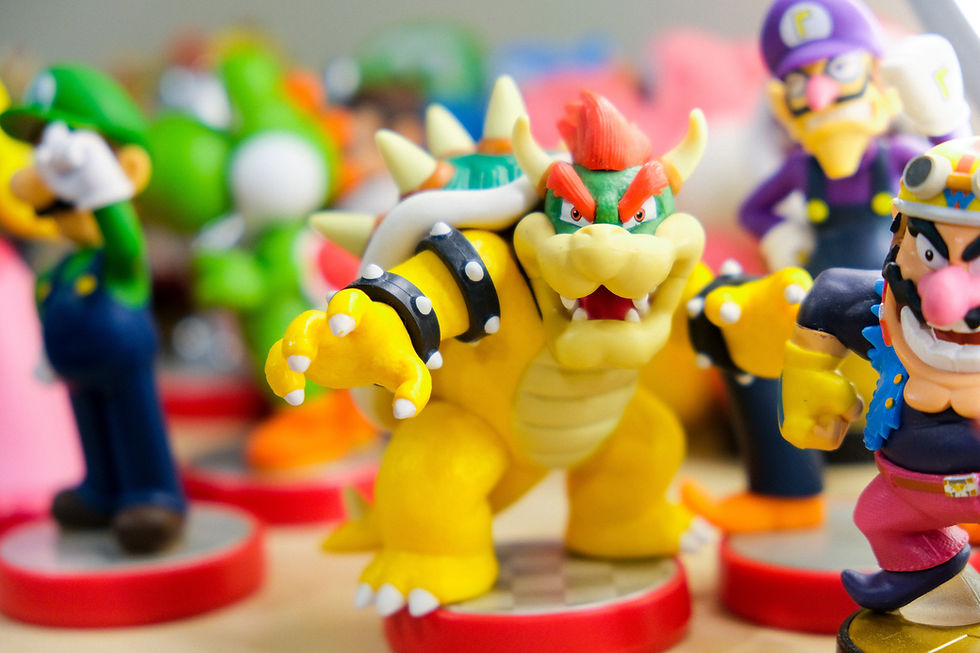Nintendo vs Sega Console Wars
- Kiersti Vazquez
- Apr 26, 2021
- 4 min read
Console wars often show the best and the worst of what a company has to offer. There have been countless console wars in the past, but one of the most impactful console wars of all was Sega Vs. Nintendo. Not only is it one of the more famous ones, but it also changed the lives of many. This war also marked the infamous rivalry between Sonic and Mario.

Before the war began, the video game industry suffered from a market crash in 1983. A main factor for the crash was the poor publishing control for console games. The early success of consoles like Atari brought the attention of capitalists. To gain similar success, they hired inexperienced programmers to create games. These games were of poor quality, and the abundance of them flooded the market and made it hard to sell games of actual quality. In Japan, Nintendo had released the Famicom, one of the first gaming consoles to exist. Nintendo kept a watchful eye on the manufacturing of game cartridges using a licensing model to limit the number of third-party games published. It became a hit in Japan, but to market to American audiences, Nintendo had to redesign the Famicom. It was soon changed and renamed the Nintendo Entertainment System, also known as the “NES”. The NES changed the gaming industry and established Nintendo as the dominant company for video games. The introduction of the NES brought more revenue for Nintendo.
Meanwhile, Sega released the SG-1000 in hopes of joining the growing industry. The console was released in Japan the same day as the Famicom but did poorly in its first year. The SG-1000 was redesigned twice. Because Nintendo had tied up other developing companies to develop for the Famicom, Sega was forced to produce their original console. Sega had hoped to localize the SG-1000, but only managed to sell 2 million copies. Sega was already overshadowed by Nintendo, but it wouldn’t be the end for Sega
It wasn’t until 1993 with the release of one of the most controversial games of the ’90s did the Nintendo vs. Sega console wars start. In 1992 both Nintendo and Sega published the game “Mortal Kombat” on their respective consoles. While the game was relatively the same, what differed them greatly was the use of blood. On the Sega Genisis, the game included blood that originally came with the game while the NES had the game censored with gray sweat. The censorship of blood was done to keep Nintendo’s family-friendly image. This caused huge controversy, requiring the need for an age rating system to be made. While Nintendo purposefully marketed towards children, Sega stated that their main target was an older audience. This established Nintendo as a family-friendly company, with Sega as a more mature platform.
Sega’s biggest selling point for the Genesis was the graphics it had at the time. Compared to Nintendo, their graphics were superior for a bit. In advertising, Sega would boast about their graphics while putting down the Super Nintendo, taking shots at the company whenever they could. With Nintendo being the massive company that it is, it seemed as if Sega was trying to knock down an airplane by throwing rocks. Their advertising did manage to catch the attention of older teens. With the creation of mascots such as sonic, Sega was determined to brand themselves as the more edgy and cool company. It soon became a selling point that proved to show appeal. It made Nintendo seem inferior and less mature, making Sega seem like the more cool company.
For years Nintendo and Sega would compete against each other. Sega would take continuous shots as Nintendo, with slogans such as “Genesis does what Nintendon’t!”. The companies would release games and consoles that would compete against each other. Sega genesis vs the SNES (Super Nintendo entertainment system), DreamCast vs GameCube, Super Mario World vs Sonic the Hedgehog, the wars were ruthless. However, Sega began to show a gradual decline. They would begin to take missteps and would lose their status as a successful company. The company would start to confuse their fanbase with add-ons such as the Sega CD and the Sega32x. This happened before the Japanese side of the company decided to develop the Sega Saturn, which was plagues with developmental issues. All of this combined caused frustration within the company, eventually leading to the CEO of Sega of America stepping down in July 1996.
Nintendo had released the Nintendo 64 between 1996 and 1997, which would outsell the Sega Saturn 33 million to nine million by the end of the console’s lives. Sega had become desperate and released the DreamCast in 1998, but the damage was done. The console failed to sell, causing the company to go out of the console business altogether.

The Sega and Nintendo wars were ruthless, but it became clear that Nintendo would continue to be the winner. While Sega did step down in the console business, they would continue to make and release games for all kinds of consoles, including Nintendo. The two companies show no ill will towards each other and have worked together on multiple projects in the past. In 2013, the companies announced that they would form a partnership with each other. The partnership would allow the next three Sonic games to be released on Nintendo consoles. The companies still work together to this day, even allowing crossover games such as “Mario and Sonic at the Olympic games”
Written by Kiersti Vazquez
















Comments